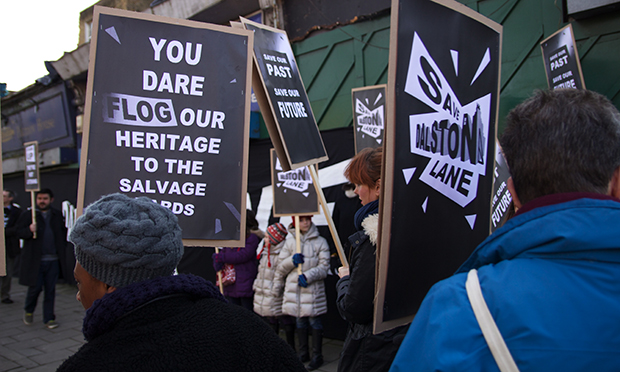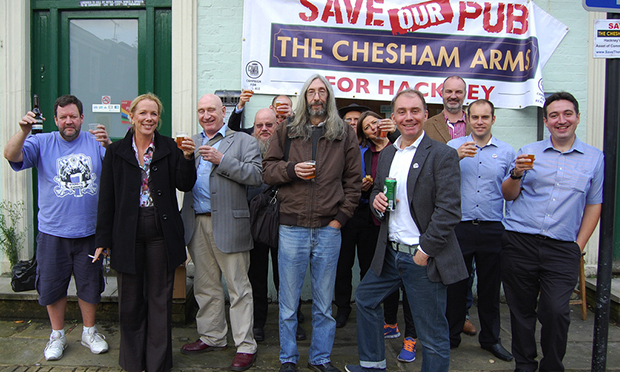Why heritage activism is something worth developing
Every year, more than 10,000 people from around the world descend on Minneapolis, in the United States, for the international Internet Cat Video Festival. They gather in gigantic auditoria to watch the pick of the year’s crop of Internet cat videos, and chat about them afterwards.
For Loyd Grossman, the pasta sauce maker and broadcaster who is chairman of the Heritage Alliance and Churches Conservation Trust, as well as president of the National Association of Decorative & Fine Arts Societies (NADFAS), the annual vid-fest is a good omen for the future preservation of England’s built heritage.
“People actually like something tangible, and they like something that involves other people,” he said at a recent talk for the East End Preservation Society (EEPS). “This is the power of reality, and if heritage doesn’t represent reality, what else does?”
Elaborating, Grossman posed and answered the obvious question on the cat-and-chat convention: “Why do they do it? They do it because they want to do something with other people. There’s this tremendous resurgence of social interest, and this is something that we who work in heritage need to harness.”
Grossman’s observation about the “power of reality” can be applied as much to William Morris and Octavia Hill as it can to the various campaigns to save heritage buildings in Hackney over recent years. From OPEN Dalston to the Save the Chesham campaign, these are campaigns that always rely on “social interest” in buildings people feel belong to them, even if they’ve never done more than look through the keyhole.
The Chesham Arms
In the case of Save the Chesham, many of the campaigners had looked inside a great deal more, frequently spending whole evenings at the popular 150-year-old pub on Mehetabel Road, Homerton, until it was closed in 2012 after being purchased by developer Mukund Patel, who converted it into an office space with a flat above.
Save the Chesham, a group of residents and former customers, formed to restore the pub and succeeded first in having it designated an Asset of Community Value and finally in having a highly unusual ‘Article 4’ direction served on the premises, which meant that any future change of use from being a free house would require planning permission. The Chesham Arms is to re-open as an ‘East End boozer’ this summer.
Save Dalston Lane
Less happy is the fate of 48-76 Dalston Lane, a terrace of Georgian buildings where demolition work has begun following a decade-long struggle. The planned development of ‘heritage likeness’-fronted non-affordable flats which will take its place was tenaciously opposed by conservation group OPEN Dalston, upon whose blog the ins and outs of the story are painstakingly documented by Bill Parry-Davies, prominent Hackney lawyer and OPEN Dalston founder.
The Dalston Lane buildings were bought by Hackney Council from the Greater London Council in 1984 and sold to an off-shore company in 2002. Severe structural damage followed, including fires, with the new owner subsequently applying for planning permission to demolish the buildings and replace them with shops and flats. In 2010, the council bought the terrace back for twice the price it had sold it for and promised a ‘conservation-led’ development scheme to preserve it. In January 2015, final approval for demolition of the terrace was given by a judge who turned down OPEN Dalston’s final appeal.
Bishopsgate Goodsyard
Looming on the horizon is the greatest heritage battle to have been fought in East London for a generation: the proposed Bishopsgate Goodsyard development (“the biggest thing to hit the area since the plague,” in the words of one campaign group) by firm Hammersons and Ballymore.
Hackney Council launched a campaign back in February to ‘save Shoreditch’ from the £800 million scheme for two high-rise luxury flat complexes to be built on the site. Pointing out that the development would stand almost as high as the Canada Place tower in Canary Wharf, Pipe warned it would threaten the “local, creative” tech economy in Shoreditch and “do nothing to help London’s housing crisis”. A heavily redacted financial viability report explaining why the developer had found it was only possible to make the scheme only 10 per cent affordable flats rather than the original 35 per cent was released under a Freedom of Information request in February.
David and Goliath
But what can three dozen people gathered in a church hall do about any of this? Grossman believes the struggle is intense. “Often David does slay Goliath, but you’ve got to remember that after David slew Goliath, he took the day off. Which is something that we can’t do, because we go to war every day, you know it never stops. It never ever stops.”
The resilience and sheer enthusiasm of heritage supporters is, Grossman believes, why the sector’s activities have managed to survive swingeing financial cuts, which have been inflicted by “governments of both colours”. “Exceptional individuals you know who often at great sacrifice, often with no resources, have gone in there and defended and protected the heritage – they’re the people who should be inspiring us,” he said, unveiling a Photoshopped “What would William Morris do?” poster, adapted from the more famous Jesus type.
Jonathan Meades – architecture critic and, like Grossman, a former restaurant reviewer – had a good line on Morris when he said Morris believed the world could be saved through expensive wallpaper. One wishes for a better inspiration when the slip from conservation to a reactionary anti-urbanism can be as easy as Morris proved it to be. Grossman is aware of the need for “dialogue” with developers, but during the whole of his talk there was little about what positive development might look like.
On the other hand, there was a proposal for positive cultural and civic engagement: “London isn’t crying out for more visitors, it’s not crying out for more inhabitants – it’s crying out for citizens. Citizens who feel that they belong and whose lives have joy and meaning and significance and pleasure, because they are citizens of London, because they belong to this place. And for me the most tangible sign of our citizenship is the way we care for our heritage.”


